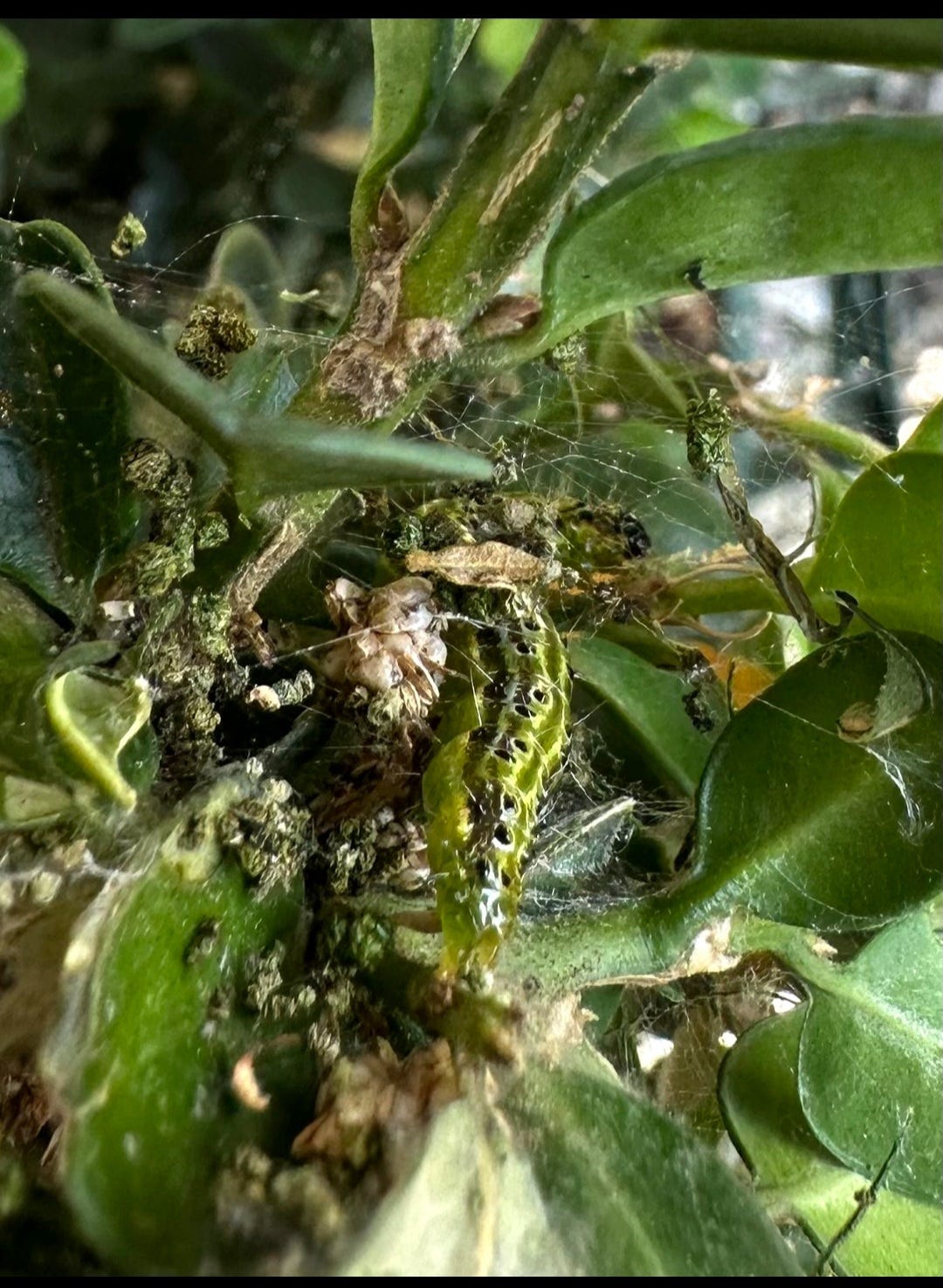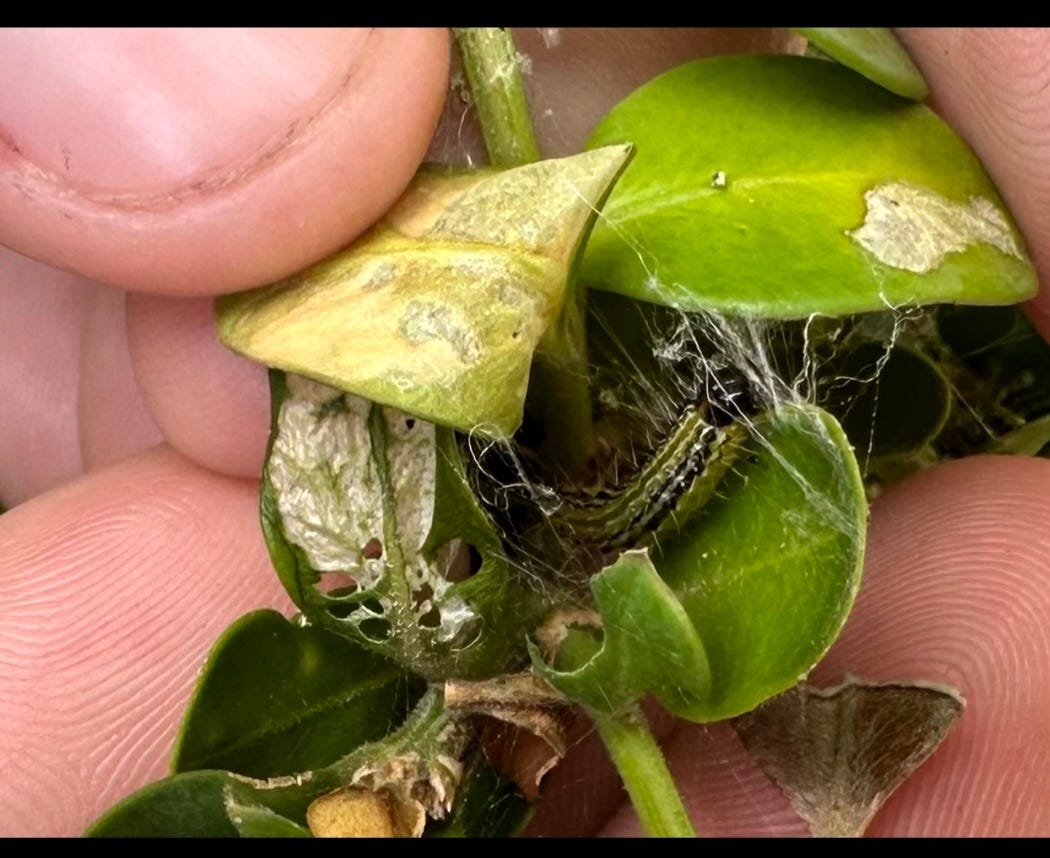The box tree moth is a non-native, invasive insect that has the potential to cause major damage to one of the most popular plants used in our landscape. This would be the different species of boxwood.
It was first discovered in Canada in 2018. It was discovered in Ohio in 2023. Currently, this insect is only found in Delaware, Massachusetts, Michigan, New York and Ohio. In Ohio, it seems to have had its greatest impact in the Loveland area. Unfortunately, there, you can find subdivisions where all of the boxwoods have been destroyed.
How to protect your boxwoods
Start the day smarter. Get all the news you need in your inbox each morning.
The box tree moth has had a devastating effect in certain areas. This is because it entered the area undetected. Nobody was looking for it. Realistically, the insect is easy to treat. However, there are no insecticides that can be used preemptively to protect the plants.
You need to have a strategy to protect your boxwoods. This starts with monitoring the plants for the presence of the insect when it is in its larval stage. This is when they are caterpillars. They are greenish yellow with black dots and stripes. They have black heads. With these colors, they are easily camouflaged inside of your boxwood plants.
You need to look for the worms on the inside of the plants, near the middle. This is where the female moths lay the eggs. The eggs hatch the caterpillars. Then, they quickly start eating their way from the inside out. If you find them towards the outside of the plant, you are most likely too late.

If you do not see the worms, there are other things to look for as an indication of their presence. One would be damage to the foliage. You will see the damage from the chewing. They also create a silk webbing as they are working their way through your boxwood plants.
If you have boxwoods, you need to inspect your plants as soon as possible. These insects have been active since the end of June. If you have them, you can use an insecticide called Spinosad. You can also use insecticides containing BT- Bacillus thuringiensis or Pyrethrin.
Spinosad has been used most frequently with success. You need to repeat the spray after five to seven days, and again a third time. Then, continue to monitor your plants. There could be eggs that could hatch new generations. The insecticides will not kill the eggs. They can regenerate quickly in the summer heat. You can have as many as three to four generations in a season.
The future of boxwoods
I have had the pleasure of having several conversations in the past week with Hamilton County’s Ohio State University Extension Agent Joe Boggs on this subject. We are very lucky to have Boggs as an authority on bugs in our area. He is a wealth of knowledge to help us keep our landscapes healthy. He truly understands the need for plants and bugs to live happily together.
I asked Boggs what impact the box tree moth would have on the future of boxwoods in our landscapes. He was very optimistic. This is because both the box tree moth and most of the varieties of boxwoods we use are native to Asia. Boxwoods are still thriving in Asia and most likely always will.
This is because in Asia, there are natural predators and parasites that keep the box tree moth population in control. At this point, it is impossible to know if that will happen here. For now, we need to all band together to monitor the plants in our landscapes and control the insects when you see them.
When you do find them, you should report the sighting to the Ohio Department of Agriculture’s website. Search for invasive insects, then box tree moth.
More information
Ohio State University Extension also has three great fact sheets for more information:
-
Information on BTM’s range and spread, including its life cycle:
ohioline.osu.edu/factsheet/ent-0099
. -
Information on detecting BTM:
ohioline.osu.edu/factsheet/ent-0100
. -
Information on management options, including insecticides:
ohioline.osu.edu/factsheet/ent-0101
.
This article originally appeared on Cincinnati Enquirer:
This invasive insect is a big danger to boxwoods in Ohio. How to keep yours safe













Leave a Reply